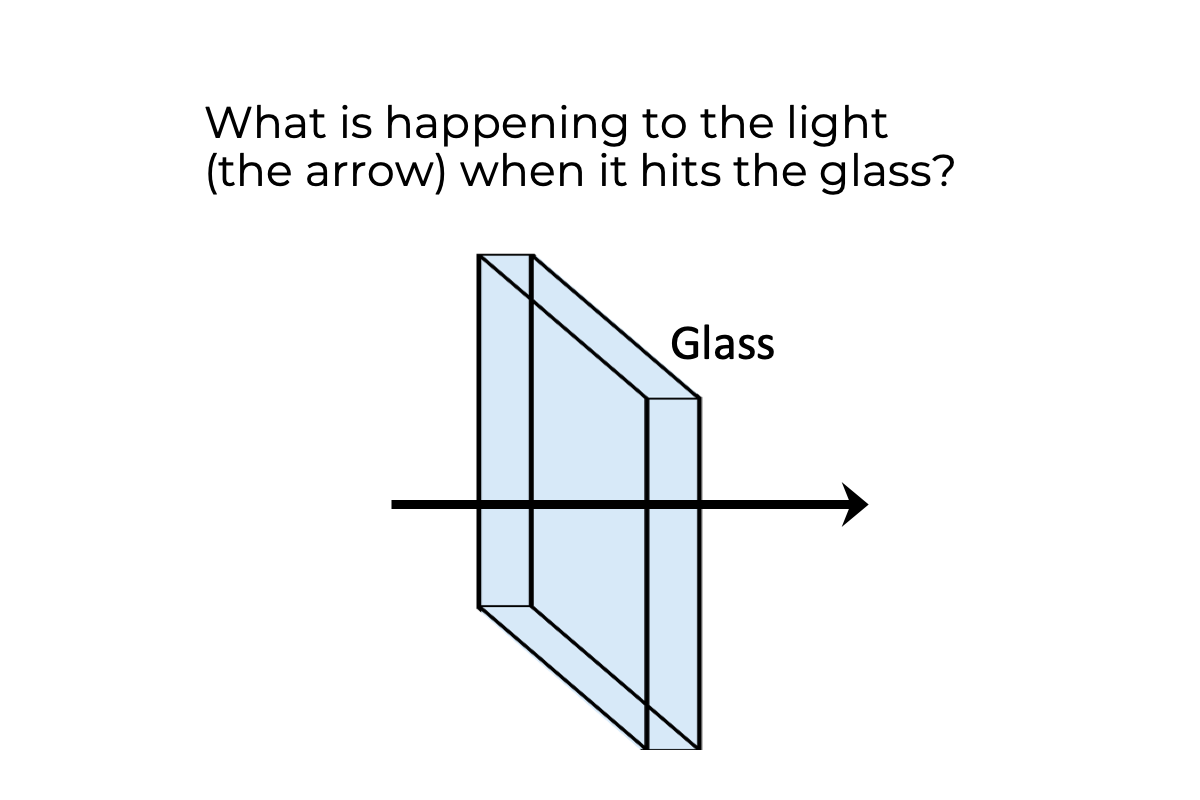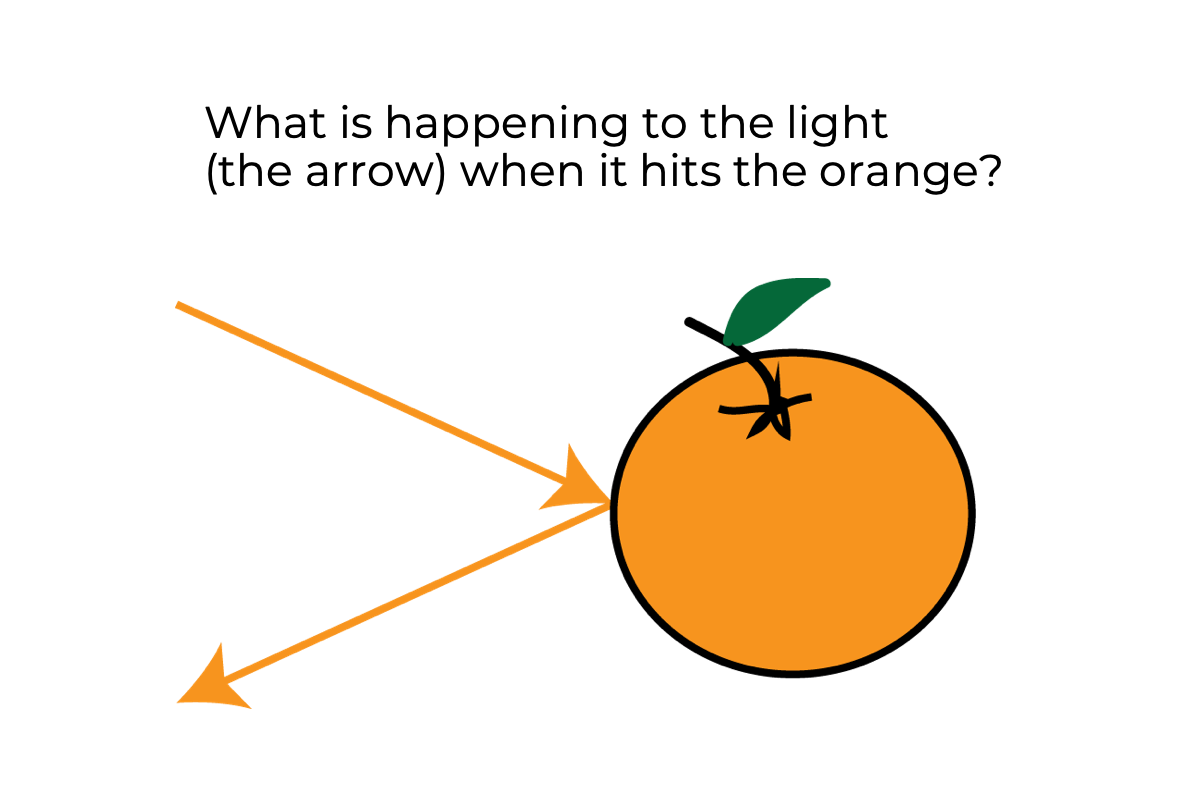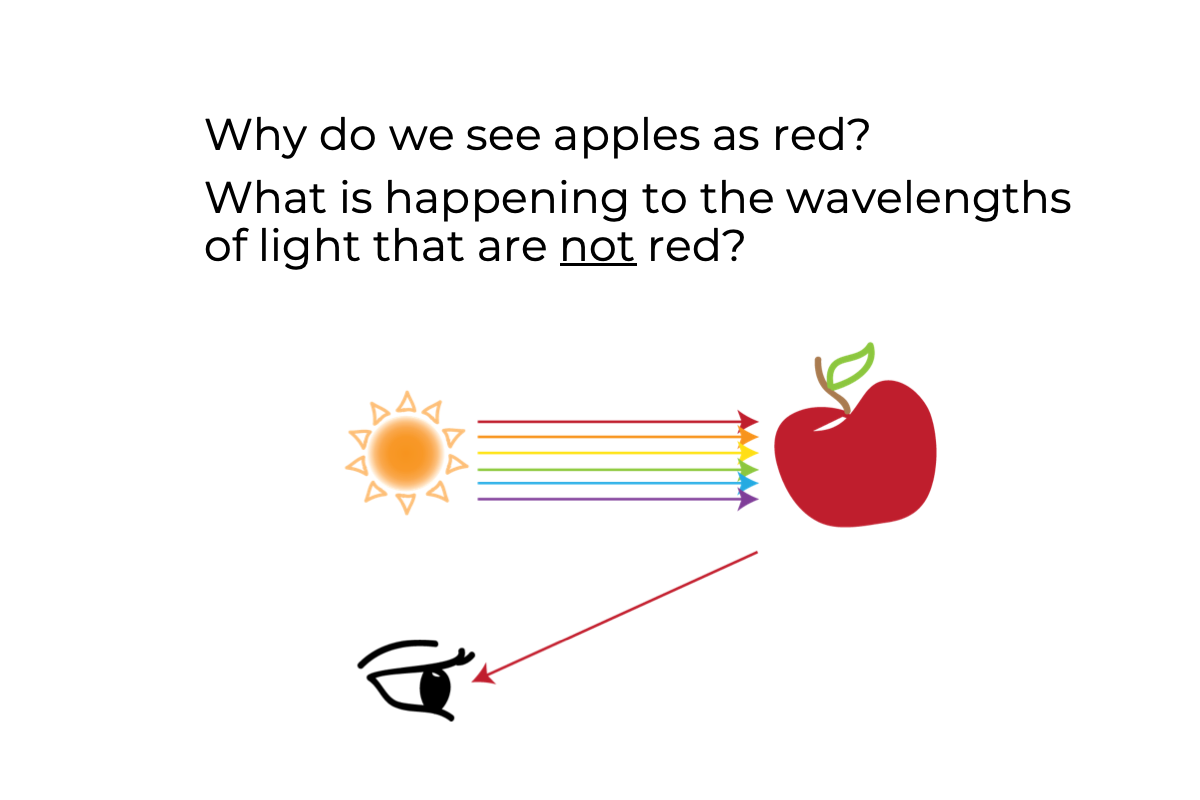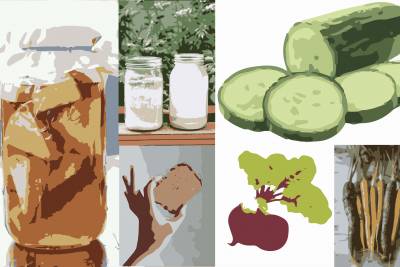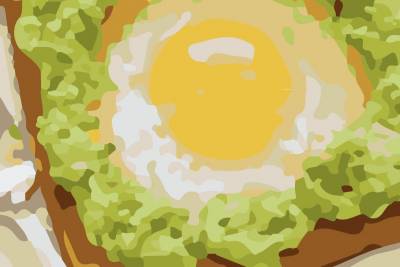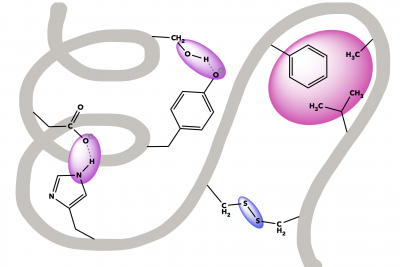Light Interacting with our Environment
Light interacting with our environment
Light/electromagnetic radiation travels in a straight line and can do a couple of things when it hits an object. If we think about a specific wavelength of light as it interacts with an object, it can be:
- Reflected (reflection) – electromagnetic radiation/light bounces off the surface of the object. In order to see an object that doesn’t make it’s own light like the sun, light needs to bounce off the object and reach our eyes.
- Absorbed (absorption) – energy from the electromagnetic radiation/light is taken up/‘soaked up’ by the object (provide Ex.)
- Whether light is absorbed depends on the wavelength of light and atoms that the object is made up of. Different atoms or molecules have specific vibrational frequencies and when the vibrational frequency of the molecule matches the wavelength of light that hits it, the light gets absorbed.
- Transmitted (transmission) – when the light moves through the object.
- Diffracted (diffraction) – the spreading/bending of light as it goes through openings or around the edges of objects. The spreading of electromagnetic radiation looks a lot like the ripples you make in water when you dip your toe in.
- If the wavelength of the electromagnetic radiation is much smaller than the object around which is bends or opening it is going through, then very little to no diffraction is observed.
- Refracted (refraction) – the bending of transmitted light as it travels across the boundary of one material into another material in which it’s speed is different. Unlike diffraction, this change in direction of light occurs because light is changing its speed in the different substances in it traveling in.
- The refractive index of a material is a number that describes how light will travel in it compared to how it travels in air or in a vacuum. The higher the refractive index of a substance, the slower light travels.
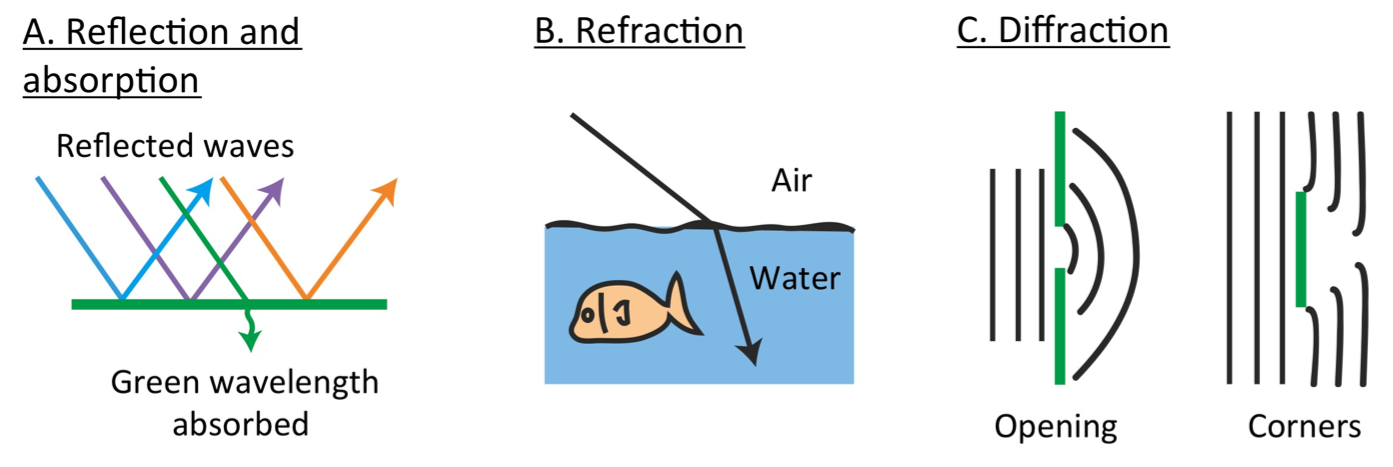
Something to keep in mind: We learnt earlier that the visible white light we see actually composed of different wavelengths. Therefore, when white light hits/interacts with objects, what happens to the light is complex/complicated with some of the wavelengths reflected while others are absorbed or transmitted.
Sunlight that reaches our atmosphere is composed of all the colors of the rainbow (ROYGBV). The different wavelengths of light are scattered differently by particles in the air. Smaller wavelengths scatter more than longer wavelengths.

